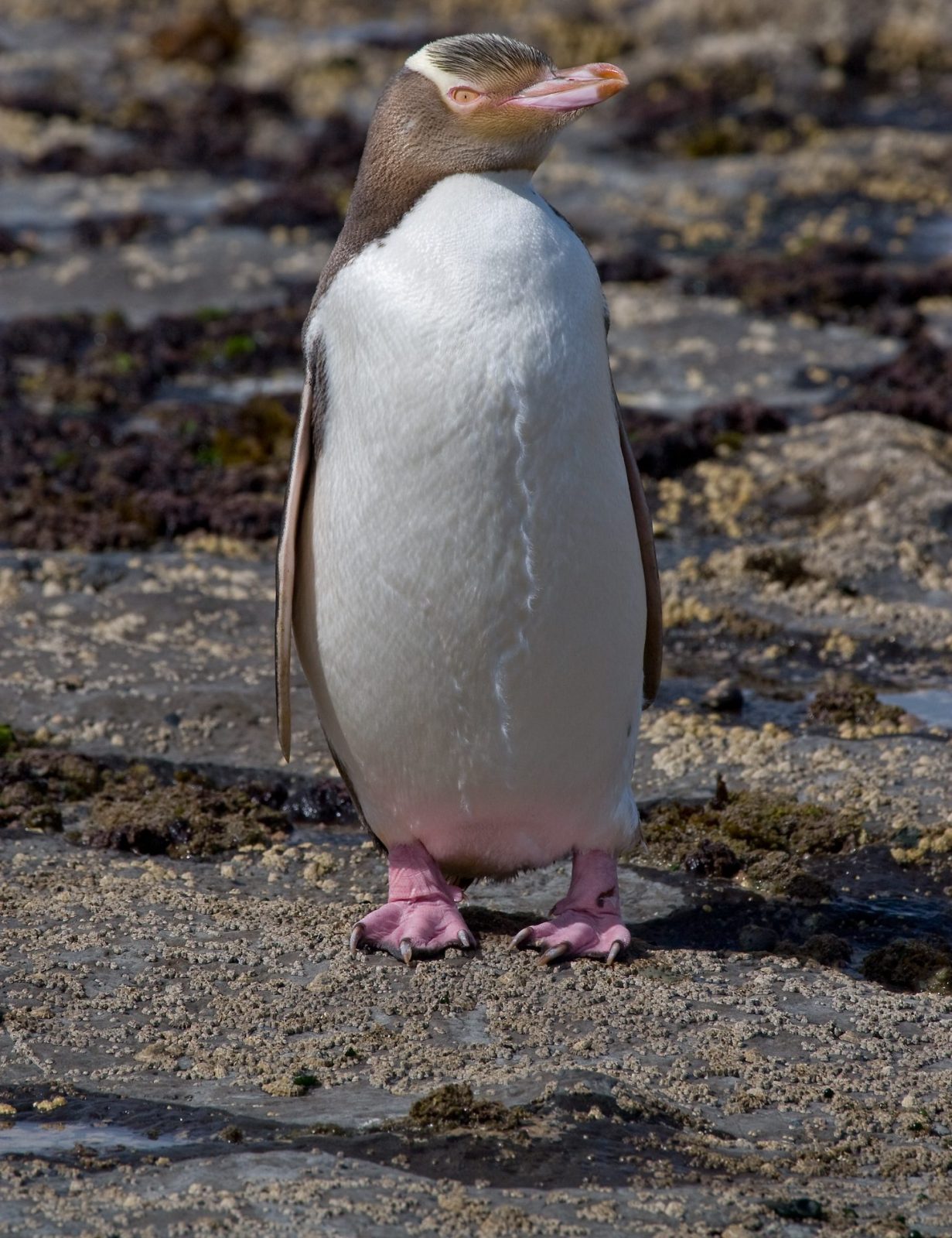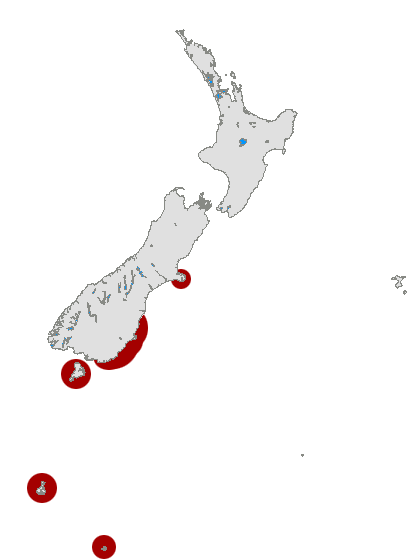
Yellow-eyed penguin
 Hoiho and Tarakaka are other names for the yellow-eyed penguin, which is a species endemic to New Zealand. The species breeds on the eastern and south-eastern coastlines of the South Island of New Zealand, as well as Stewart Island, Auckland Islands, and Campbell Islands. Colonies on the Otago Peninsula are a popular tourist venue, where visitors may closely observe penguins from hides, trenches, or tunnels.
Hoiho and Tarakaka are other names for the yellow-eyed penguin, which is a species endemic to New Zealand. The species breeds on the eastern and south-eastern coastlines of the South Island of New Zealand, as well as Stewart Island, Auckland Islands, and Campbell Islands. Colonies on the Otago Peninsula are a popular tourist venue, where visitors may closely observe penguins from hides, trenches, or tunnels.
Unfortunately, declines in places on the mainland have been precipitous, one such place is the Otago Peninsula, the penguin has seen its population reduce by 75% since just the 1990s. As this reduction has not ended, it is thought that local extinction in the next 20-40 years is a significant possibility. Although direct human effects are not helpful, bigger impacts include the an outbreak of illness and fisheries pollution, which have had a bigger impact. It is the sole member of the genus Megadyptes, despite the original thought that this species closest relation is the little penguin.
- M. a. antipodes, yellow-eyed penguin. The only extant subspecies. Formerly most abundant in the subantarctic Auckland and Campbell Islands, it colonized Stewart Island and part of the South Island after the extinction of the Waitaha penguin.
- M. a. waitaha, Waitaha penguin. Extinct. Was present in the North Island, South Island, Stewart Island, and Codfish Island. Last dated to 1347–1529 AD. Archaeological remains indicate that early Polynesian settlers hunted the species and that this, with possible additional predation by Polynesian rats and dogs, was a probable cause of extinction. Described as a new species M. waitaha in 2009, but reclassified as a subspecies M. a. waitaha in studies from 2019 and 2022
- M. a. richdalei, Richdale’s penguin – Extinct. A dwarf subspecies from the Chatham Islands. Last dated after the 13th century. It was hunted to extinction.
Below, there is a Yellow-eyed penguin, and below that is a list of any times it might have been mentioned on here (we have a members area for a variety of groups, one being writers, and wed love to publish articles , do get in touch).
Below that, we intend to list a load of people who can help you stee this animal in the wild, do consider listing your location.










